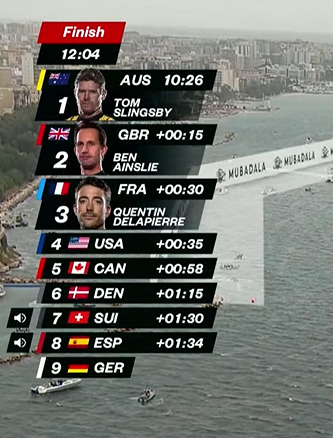#tom slingsby
Text
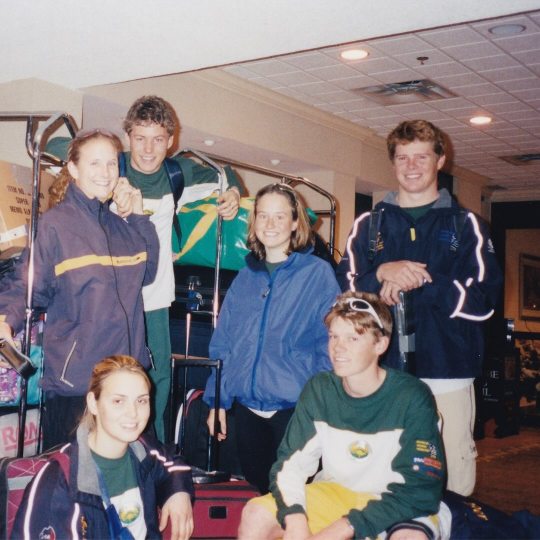
Nathan Outteridge and Tom Slingsby as junior sailors, via the SailGP Facebook page.
(There wasn’t a date given, but since they look like tweens/young teens I would guess c.2000?)
2 notes
·
View notes
Text
Hope they’re gonna give…
… Natasha (Tash) Bryant a turn at the helm.
2 notes
·
View notes
Text

SailGP Mobile Wallpapers
// FEBRUARY 24TH, 2024
As the exhilarating 2024 SailGP circuit rolls into Sydney Harbour this weekend, I thought it was high-time I got a set of team supporter wallpapers out there for your mobiles and Apple Watches, kicking things off with my crew:
🇦🇺 Team Australia

Mobile wallpaper | Apple Watch face
See also:
Tom Slingsby SailGP Mobile Wallpaper
🇨🇦 Team Canada
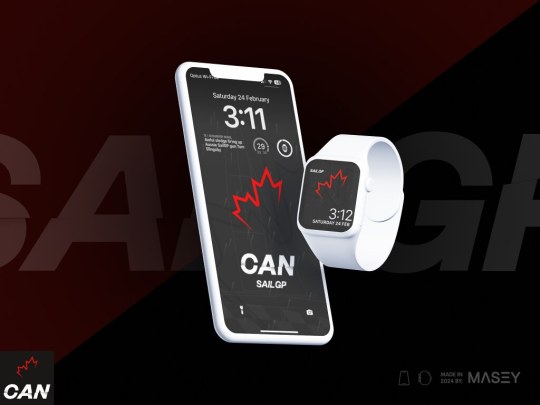
Mobile wallpaper | Apple Watch face
🇩🇰 Team Denmark

Mobile wallpaper | Apple Watch face
🇫🇷 Team France

Mobile wallpaper | Apple Watch face
🇬🇧 Team Great Britain

Mobile wallpaper | Apple Watch face
🇩🇪 Team Germany

Mobile wallpaper | Apple Watch face
🇳🇿 Team New Zealand

Mobile wallpaper | Apple Watch face
🇪🇸 Team Spain

Mobile wallpaper | Apple Watch face
🇨🇭 Team Switzerland

Mobile wallpaper | Apple Watch face
🇺🇸 Team USA

Mobile wallpaper | Apple Watch face
Links & credits:
Watch face artwork // Rob Masefield
All SailGP team logos and branding marks are of course the property of their respective teams.
SailGP // sailgp.com
This work is licensed under a Creative Commons Attribution-NonCommercial-NoDerivatives 4.0 International License.
5 notes
·
View notes
Photo
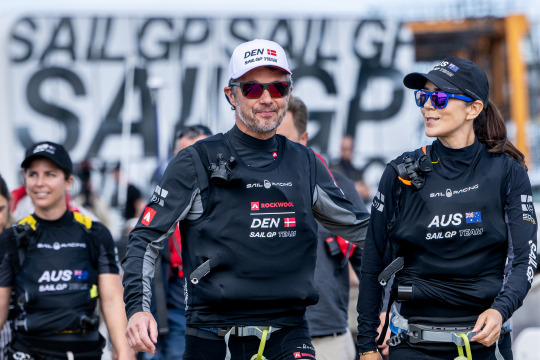





On Saturday, Crown Prince Frederik joined the Danish skipper Nicolai Sehested and his Denmark Sail Grand Prix Team, while Crown Princess Mary was on board the Australian boat captained by skipper Tom Slingsby for a trial sailing against each other 🇩🇰 🇦🇺
It was a close race, where Team Australia won 🏆
67 notes
·
View notes
Text


APOCALYPSE NOW IN THE UK -- THE SECOND COMING OF PUNK FOR '81.
PIC INFO: Rack toms galore -- Spotlight on live shots of Dave "Bambi" Ellesmere-era DISCHARGE, during the band's summer "Apocalypse Now" UK tour, venue & location unknown, c. 1981. 📸: Antony Slingsby.
Dis nightmare still @$*!#&% continues!!
Source: www.picuki.com/media/2954705732848137089 (Picuki 2x).
#DISCHARGE#Apocalypse punk#UK punk#Dave Bambi Ellesmere#Bambi Ellesmere#80s hardcore punk#Apocalypse Now Tour#Dave Ellesmere#Drummer#Anti-war#1980s#Kelvin Cal Morris#Nuke Wave#Hardcore punk#Real punk#WHY 1981#DISCHARGE 1981#Punk photography#WHY#Second Wave UK punk#1981#Noise Not Music!#80s punk#Cal Morris#80s#Punk drummer#Bambi#D-beat#Apocalypse Punk Tour#Punk gigs
2 notes
·
View notes
Text
F1 legend Sebastian Vettel invests in new German SailGP team
F1 legend Sebastian Vettel invests in new German SailGP team ahead of globe-trotting event's fourth season with quadruple world champion planning to take a hands-on role
Vettel, 35, retired from Formula One racing at the end of the 2022 season
He has invested in a new Germany SailGP boat skippered by Erik Heil
By Adam Shergold for MailOnline
Published: 12:58 EDT, 31 May 2023 | Updated: 12:58 EDT, 31 May 2023
Formula One legend Sebastian Vettel has invested in the new Germany SailGP team in his first sporting move following retirement from racing.
The four-time world champion, 35, has partnered with double Olympic sailing bronze medallist Erik Heil and team owner Thomas Riedel in the sport often described as 'F1 on water.'
Vettel and Riedel will both put money in to the German team, with Heil, who was on the podium at both the 2016 Rio and 2020 Tokyo Olympics, set to drive the 100km/h F50 hydrofoiling catamaran.
The German boat takes the SailGP field to 10 ahead of the opening event of its fourth season in Chicago on June 16.
Vettel said: 'I see a lot of potential as SailGP starts its fourth season and for the first time with a German team. Parallels between sailors and Formula One have long existed.
Formula One legend Sebastian Vettel (left) and with skipper Erik Heil at the launch of the new SailGP team he has invested in
SailGP CEO Sir Russell Coutts (left) hands over the wheel of the German boat to (second left to right) Erik Heil (Driver), Sebastian Vettel (Co-owner) and Thomas Riedel (Team owner)
Germany will be the latest addition to the SailGP fleet ahead of the event's fourth season
'The boats are fascinating and the speeds on the water are incredibly high. The races are exciting and I am happy to be close to them with a motivated group of young sailors.
'In addition, the series not only uses wind power, but also strives to set new standards in sustainability in sports.'
Vettel won four consecutive Formula One drivers' championships with Red Bull between 2010 and 2013, before pushing Lewis Hamilton close with Ferrari in 2017 and 2018.
He spent the final two seasons of his F1 career with Aston Martin before announcing his retirement in July 2022.
Vettel plans to take a hands-on role in the management of the German SailGP team, which was officially welcomed to the event by CEO Sir Russell Coutts at an event in Dusseldorf on Wednesday.
The strongest challengers in the 2023-24 season will be three-time SailGP champions Australia skippered by Tom Slingsby, the New Zealand boat led by Pete Burling and Sir Ben Ainslie's British team.
Vettel won four consecutive Formula One world titles with Red Bull between 2010 and 2013
Vettel, 35, waved goodbye to Formula One with Aston Martin at the end of the 2022 season
The sustainability aspect of SailGP would have been a big draw for Vettel with all the teams competing in an Impact League which ranks them on being the most environmentally conscious.
Vettel regularly wore custom t-shirts and helmets to promote environmental causes during his F1 days.
He caught up with Lewis Hamilton at last weekend's Monaco Grand Prix with the Mercedes driver posting an Instagram picture of them sharing a hug.
Share or comment on this article:
F1 legend Sebastian Vettel invests in new German SailGP team
via Formula One | Mail Online https://www.dailymail.co.uk?ns_mchannel=rss&ns_campaign=1490&ito=1490
2 notes
·
View notes
Text
Wind, Weather and Currents - Part 3
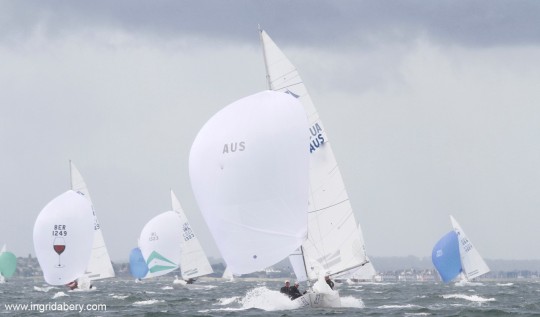

Wind, Weather and Currents - Part 3. Continuing Andrew Palfrey's insights regarding working with the weather to improve your racing.
Brett: If a wind shift seem persistent, how do you establish a mean or is it a constant process?
Yeah, look, just to comment on Melbourne, it's a fantastic place to race boats, as we know, great conditions, wind, sea. But because of that steady-state nature of the breeze, when it's blowing from the sort of southwest area, and also the lack of tides.
You come to a place of like Cowes where I live now, and it's almost a different sport. So I think people that learn to sail in...there's so many good sailors that come from Sydney that learn to sail up west of the Sydney Harbor bridge, for example, or Pittwater, where the breeze comes out of all the valleys, and little bays, and nooks and crannies. It's so unstable.
FREE BOOK - TIPS FROM SAILING LEGENDS
Local Knowledge
Even Tom Slingsby is an example of that, having grown up in the Gosport area. Basically, you just become used to things not being stable and instinctively pick-up these cues of what the wind looks like on the water or even looking at the landscape geography.
Up the course, say, the wind's coming from the land, and just sort of instinctively almost knowing that all that little hollow there, fair chance there's going to be more breeze downwind of that, or whatever.
So this...I mean that's just a little one off the side. I mean, what is the mean number? It's something we set in our own mind. So I think, yes, for sure, it's fluid.
I think, depending on kind of how your mind works and how...I think that these sorts of things...I mean, what does the mean do for you? I think a mean or an average number gives you a base for your decision-making.
Working with a persistent shift
And for sure, if you think it's going to be a persistent breeze or if you know it's going to be a persistent breeze, like say, you go to Sydney or Pittwater and you race offshore, you know, sea breeze, you generally know it's going to go left, so you're probably updating your mean number as you go through the yacht race for sure.
Like if you're up in Sydney, say if you're pointing at 20 degrees on starboard tack in race one that might be like 005 degrees in race three on starboard tack. And you're happy to be at 005, whereas, you wouldn't have been happy in race one. So you update through the day for sure, if it's a persistent shift.
What's interesting too is that I think, even with your placement on the course, that sort of dictates in a funny way, like you create your own persistent shift, and that might sound strange.
FREE SAILING GLOVES
But what it means is that...let's say, you're approaching the top mark, and the shifts, you kind of established through your tuning up and then It's fairly, common that you might be prepared to dig into a shift a little more ie you're sailing at the headed tack a little more to get to a side on that kind of final four, five, or six minutes of an upwind leg.
Knowing that, let's say, for example, if you're on port tack, and there's two minutes left of starboard tack in the leg, let's say, it might start to head, been left, but now it's going right and it's gone through your mean and it's now, you're on the headed tack, you might just dig into that for another minute or so. So you get right into the header and then when you tack, your lifted, but it won't go back until after you rounded the top mark.
So that, in effect, is a persistent shift, even though it's an oscillating day, it's just another way to think about it. You're playing it as a persistent shift.
Brett: In an oscillating breeze, how do you work out when to tack?
Andrew: Yeah, I think it sort of depends what you see, and it depends where you are, and it depends where the fleet is. And the amount of importance for each one of those three things also, you need to weigh. up
It's a fairly complex decision but the guys that sail a lot and race a lot, they can make those decisions instantly. And it’s definitely, having raced at a higher level regularly is quite important for a good tactician.
It is also a bit of a confidence game, as well. So what does all that mean? Well, it might be that the breeze has headed. It's now in what you would definitely consider to be headed based on all your homework.
However, you can see more breeze ahead. And your homework before the start, or your sailing around before the start, you may have sort of deduced that the breeze isn't moving across course that well, for whatever reason.
So it might be that you need to dig into...you just got to get to the breeze, it's that sort of day, you got to get to the breeze, it's not going to come to you. So it might be that that's the most important thing.
FREE BOOK - TIPS FROM SAILING LEGENDS
Compass or Wind?
And just sailing the compass isn't as important as getting to the wind. So what I'm doing here is I'm probably just highlighting why you wouldn't just sail on the compass numbers.
So conversely, it may be that you just don't see any difference, side to side, however we're headed. Okay, that's fine. Let's say, we're on starboard tack, out near lay line. Not on lay line, but out near lay line with a lot of starboard tack left to do. And most of the fleet is to our left.
Okay, I think we’ve got to hold up, I think we’ve just got, you know. I don’t think we should tack back. If we tack back, we're going to be putting our self on lay line and so on and so forth. Most of the fleets to our left, if we get a little righty, we're going to gain on all of them anyway.
So, no, we shouldn't tack. We need to ride this one out a little longer. If they all tack, well, that's possibly a little different, that maybe you just want to stay in phase as much as you can but... Or it might be that you're kind of midcourse, can't see the difference side to side. You've got pretty much equal boats left and right of you, you don't want to sail a header tack.
You probably should be on the other tack or you need a really good reason to keep going.
So big picture
With a lot of these things, I often say in my work as a coach, one philosophy I have that I sometimes say to people is, sailing, there might be 10 things going on.
I might actually probably know how many, and I should probably write them down, but let's say there's 10 things happening in a race, that have an impact on the race.
10 things to consider in a race
One is speed, another is set up and sail trim, another is hiking, another is decision-making. Strategic decision-making and another is tactical decision-making, and so on.
At any given time in a race, if you could graph those things along the bottom, at any time, one of them is going to be kind of peaking out.
If it was like a diagnostic on your computer, one of them is a very, very high importance at one time, and the other, bunch are kind of just buzzing away at low import.
For example, off a start line, assuming you got a fairly decent start but you can't tack. You've started a little bit down the line and you can't tack and cross. So at that time, hiking is right up there, and speed and set up is about right up there as well. Tactics don't matter.
FREE SAILING GLOVES
You've made your bed, you can't tack.
- Tactics mean nothing at that time, and strategy means nothing at that time. So you just got to put your head down, hike, trim well, be accurate on the helm. You need to be good on short-term wind calls and wave calls. Just aim to get a two or three feet gain over the next 30 seconds on those closest to you.
And then, obviously, in coming towards the mark, mechanics might be another one. Mechanics is going to be huge. Communication is going to be massive. And decision-making, on whether we jibe or we don't jibe, or we protect and hold high, or we don't.
So those things are kind of...decision-making, communication, mechanics, they're all kind of peaking. Hiking, trim, set up, really down low.
As a general philosophy, I think that's really, really important.
-



Read the full article
#sail#sailboatracing#sailcoach#sailfaster#sailing#sailinglessons#SailingSkills#sailingtowin#yachtrace#yachtracing
0 notes
Text
Tom Slingsby stars in Racing on the Edge documentary
A documentary gives a compelling insight into the insatiable spirit of Australian SailGP captain Tom Slingsby.
In season three of SailGP documentary Racing on the Edge, the Australian team gathers around as Slingsby, the crew’s driver, drops $125 into “Tom’s swear jar”.
Episode seven captures the two-time SailGP champion spitting out a barrage of expletives following a frightening brush with the…

View On WordPress
0 notes
Text

4 notes
·
View notes
Text
Never fucking apologize Tom.
youtube
Controversy is good to drive 👀 to the league.
(But you and your team do have the most time of anyone on the boats, so….).
#competitive sailing#sailgp#tom slingsby#australia sailgp team#sail gp season 4#sailgp 2023-2024#Youtube
1 note
·
View note
Text

Tom Slingsby SailGP Mobile Wallpaper
// MAY 13TH, 2023
To celebrate Australia's third straight SailGP World Championship win last week, here's a mobile wallpaper design featuring the undisputed GOAT of SailGP racing, Tom Slingsby.
To download either of the wallpapers for your iPhone and Android devices, simply click on the links below:
Lock screen wallpaper | Home screen background
Links & credits:
All wallpaper artwork // Rob Masefield
SailGP // sailgp.com
Tom Slingsby // wikipedia.org
2 notes
·
View notes
Text
Tom Slingsby stars in Racing on the Edge documentary
A documentary gives a compelling insight into the insatiable spirit of Australian SailGP captain Tom Slingsby.
In season three of SailGP documentary Racing on the Edge, the Australian team gathers around as Slingsby, the crew’s driver, drops $125 into “Tom’s swear jar”.
Episode seven captures the two-time SailGP champion spitting out a barrage of expletives following a frightening brush with the…

View On WordPress
0 notes
Text

APOCALYPSE PUNK UNLEASHED -- BUT DOES BAMBI HAVE ENOUGH RACK TOMS?
NOTE: It's the "WHY" line-up, FFS, @$!#*&% Bambi on drums!! A brand new pic that I've never seen before, and there will be a second part to this shot. Stay tuned.
PIC INFO: Resolution at 1080x967 -- Spotlight on vocalist Kelvin "Cal" Morris and drummer Dave "Bambi" Ellesmere of the mighty DISCHARGE during their summer Apocalypse Now Tour, venue & location unknown, 1981. 📸: Antony Slingsby.
Dis nightmare still @$*!#&% continues!!
Source: www.picuki.com/media/3062947278867469736.
#DISCHARGE#Apocalypse punk#UK punk#Dave Bambi Ellesmere#Bambi Ellesmere#80s hardcore punk#Apocalypse Now Tour#Dave Ellesmere#Drummer#Anti-war#1980s#Punk gigs#Kelvin Cal Morris#Nuke Wave#Apocalypse Punk Tour#Hardcore punk#Real punk#WHY 1981#DISCHARGE 1981#Punk photography#WHY#Second Wave UK punk#1981#Noise Not Music!#80s punk#Cal Morris#80s#Punk drummer#Bambi#D-beat
3 notes
·
View notes
Text
Wind, Weather and Currents - Part 3

Wind, Weather and Currents - Part 3. Continuing Andrew Palfrey's insights regarding working with the weather to improve your racing.
FREE BOOK - TIPS FROM SAILING LEGENDS
Brett: If a wind shift seem persistent, how do you establish a mean or is it a constant process?
Yeah, look, just to comment on Melbourne, it's a fantastic place to race boats, as we know, great conditions, wind, sea. But because of that steady-state nature of the breeze, when it's blowing from the sort of southwest area, and also the lack of tides.
You come to a place of like Cowes where I live now, and it's almost a different sport. So I think people that learn to sail in...there's so many good sailors that come from Sydney that learn to sail up west of the Sydney Harbor bridge, for example, or Pittwater, where the breeze comes out of all the valleys, and little bays, and nooks and crannies. It's so unstable.
Local Knowledge
Even Tom Slingsby is an example of that, having grown up in the Gosport area. Basically, you just become used to things not being stable and instinctively pick-up these cues of what the wind looks like on the water or even looking at the landscape geography.
Up the course, say, the wind's coming from the land, and just sort of instinctively almost knowing that all that little hollow there, fair chance there's going to be more breeze downwind of that, or whatever.
So this...I mean that's just a little one off the side. I mean, what is the mean number? It's something we set in our own mind. So I think, yes, for sure, it's fluid.
I think, depending on kind of how your mind works and how...I think that these sorts of things...I mean, what does the mean do for you? I think a mean or an average number gives you a base for your decision-making.
FREE SAILING GLOVES
Working with a persistent shift
And for sure, if you think it's going to be a persistent breeze or if you know it's going to be a persistent breeze, like say, you go to Sydney or Pittwater and you race offshore, you know, sea breeze, you generally know it's going to go left, so you're probably updating your mean number as you go through the yacht race for sure.
Like if you're up in Sydney, say if you're pointing at 20 degrees on starboard tack in race one that might be like 005 degrees in race three on starboard tack. And you're happy to be at 005, whereas, you wouldn't have been happy in race one. So you update through the day for sure, if it's a persistent shift.
What's interesting too is that I think, even with your placement on the course, that sort of dictates in a funny way, like you create your own persistent shift, and that might sound strange.
But what it means is that...let's say, you're approaching the top mark, and the shifts, you kind of established through your tuning up and then It's fairly, common that you might be prepared to dig into a shift a little more ie you're sailing at the headed tack a little more to get to a side on that kind of final four, five, or six minutes of an upwind leg.
Knowing that, let's say, for example, if you're on port tack, and there's two minutes left of starboard tack in the leg, let's say, it might start to head, been left, but now it's going right and it's gone through your mean and it's now, you're on the headed tack, you might just dig into that for another minute or so. So you get right into the header and then when you tack, your lifted, but it won't go back until after you rounded the top mark.
So that, in effect, is a persistent shift, even though it's an oscillating day, it's just another way to think about it. You're playing it as a persistent shift.
Brett: In an oscillating breeze, how do you work out when to tack?
Andrew: Yeah, I think it sort of depends what you see, and it depends where you are, and it depends where the fleet is. And the amount of importance for each one of those three things also, you need to weigh. up
It's a fairly complex decision but the guys that sail a lot and race a lot, they can make those decisions instantly. And it’s definitely, having raced at a higher level regularly is quite important for a good tactician.
It is also a bit of a confidence game, as well. So what does all that mean? Well, it might be that the breeze has headed. It's now in what you would definitely consider to be headed based on all your homework.
However, you can see more breeze ahead. And your homework before the start, or your sailing around before the start, you may have sort of deduced that the breeze isn't moving across course that well, for whatever reason.
So it might be that you need to dig into...you just got to get to the breeze, it's that sort of day, you got to get to the breeze, it's not going to come to you. So it might be that that's the most important thing.
FREE BOOK - TIPS FROM SAILING LEGENDS
Compass or Wind?
And just sailing the compass isn't as important as getting to the wind. So what I'm doing here is I'm probably just highlighting why you wouldn't just sail on the compass numbers.
So conversely, it may be that you just don't see any difference, side to side, however we're headed. Okay, that's fine. Let's say, we're on starboard tack, out near lay line. Not on lay line, but out near lay line with a lot of starboard tack left to do. And most of the fleet is to our left.
Okay, I think we’ve got to hold up, I think we’ve just got, you know. I don’t think we should tack back. If we tack back, we're going to be putting our self on lay line and so on and so forth. Most of the fleets to our left, if we get a little righty, we're going to gain on all of them anyway.
So, no, we shouldn't tack. We need to ride this one out a little longer. If they all tack, well, that's possibly a little different, that maybe you just want to stay in phase as much as you can but... Or it might be that you're kind of midcourse, can't see the difference side to side. You've got pretty much equal boats left and right of you, you don't want to sail a header tack.
You probably should be on the other tack or you need a really good reason to keep going.
So big picture
With a lot of these things, I often say in my work as a coach, one philosophy I have that I sometimes say to people is, sailing, there might be 10 things going on.
I might actually probably know how many, and I should probably write them down, but let's say there's 10 things happening in a race, that have an impact on the race.
10 things to consider in a race
One is speed, another is set up and sail trim, another is hiking, another is decision-making. Strategic decision-making and another is tactical decision-making, and so on.
At any given time in a race, if you could graph those things along the bottom, at any time, one of them is going to be kind of peaking out.
If it was like a diagnostic on your computer, one of them is a very, very high importance at one time, and the other, bunch are kind of just buzzing away at low import.
For example, off a start line, assuming you got a fairly decent start but you can't tack. You've started a little bit down the line and you can't tack and cross. So at that time, hiking is right up there, and speed and set up is about right up there as well. Tactics don't matter.
FREE SAILING GLOVES
You've made your bed, you can't tack.
- Tactics mean nothing at that time, and strategy means nothing at that time. So you just got to put your head down, hike, trim well, be accurate on the helm. You need to be good on short-term wind calls and wave calls. Just aim to get a two or three feet gain over the next 30 seconds on those closest to you.
And then, obviously, in coming towards the mark, mechanics might be another one. Mechanics is going to be huge. Communication is going to be massive. And decision-making, on whether we jibe or we don't jibe, or we protect and hold high, or we don't.
So those things are kind of...decision-making, communication, mechanics, they're all kind of peaking. Hiking, trim, set up, really down low.
As a general philosophy, I think that's really, really important.
-



Read the full article
0 notes
